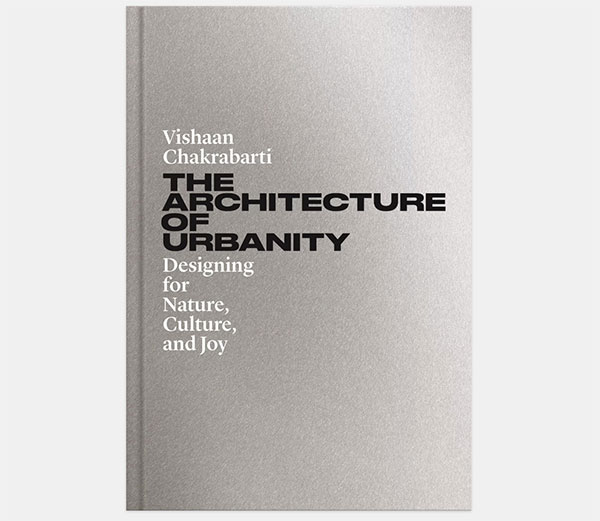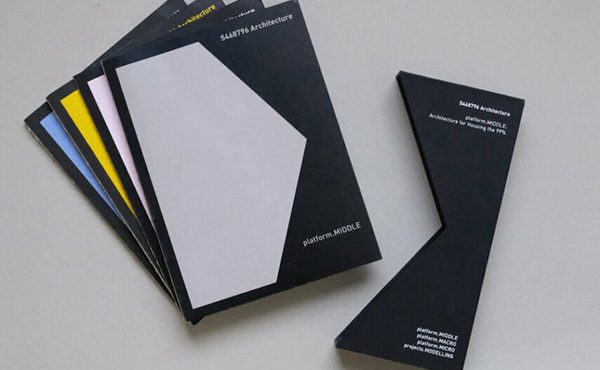
“The means for the design professions to advance an architecture of urbanity are clear – architecture practices should strive to build an infrastructure of opportunity that expands urban affordability; fights global warming through what we do and don’t construct; creates a magnetic public realm that connects people across their differences; advances pluralistic cultural, educational, and social institutions; reimagines urban mobility without the private automobile; and collaborates with partners in the public, private, nonprofit, and community sectors who share these aspirations. We need an architecture of urbanity that fulfills the needs of our hearts as much as it does our pocketbooks, which, given the limited resources of the world, means that our architects must be of an even greater talent in order to achieve more with less.”
- From The TAU of PAU
Author: Vishaan Chakrabarti (Princeton University Press, 2024)
With 2024 now in the rearview mirror, the time to leave behind despair and look to hope for the new year is upon us, and what better way to start than with this wonderful new book by architect and public thought leader Vishaan Chakrabarti.
Having started the book in 2018 and continuing up to and through the COVID years, Chakrabarti brings us right up to the first half of 2024 including mention of the conflicts in the Ukraine and Gaza. In light of this and so many other challenges, he asks: “Can we solve the existential challenges we confront by designing communities for nature, culture, and joy, with the explicit aim of creating shared health and prosperity for every being on earth?”
Kicking things off with a bang, not a whimper, Vishaan notes in the Introduction that to do any less would be to plan for failure. Observing how collectively our planet came together to combat COVID just a few years back leaves him optimistic we can pull things together.
And while it may seem obvious that architecture and urbanity are concerned with the synthesis of nature and culture, the addition of joy to the book’s underlying guiding principles is very much the outcome of his first book—A Country of Cities: A Manifesto for an Urban America. Within the latter, he admits the many projects he featured were doing the right thing environmentally and socially, but were still missing the mark when it came to what Le Corbusier referred to as the moment your heart enters in, i.e. joy.
The Architecture of Urbanity – Designing for Nature, Culture, and Joy is composed of ten chapters, divided into five on Despair and five on Joy. The first half of the book unsurprisingly looks at our current urban plight—a planet of eight billion people with the majority living in cities, most of whom use private automobiles.
Chapter 2 is entitled ‘Rage Against the Machine,’ which he admits is a graphic palette cleanser, along with chapters 6 and 9. They include many eye-popping graphics depicting the hegemony of the automobile. One of my favourites shows how many Central Park equivalents are dedicated to road use in Manhattan (2.9), preceded by an aerial photo of an L.A. interchange beside the equivalent area in central Florence, comprising the Duomo and extending to the Arno.
The second half of the book is dedicated to Hope, and includes a chapter on Vishaan’s own firm PAU, which stands for Practice for Architecture and Urbanism. As a leading voice in both architecture and planning, Chakrabarti had taught at Columbia for a decade and is now at Cornell, and was the Director of Planning in Manhattan post-911. This time saw the transformation of the urban fabric around the World Trade Centre site, while simultaneously working on such important NYC projects as the then-new High Line and Moynihan Hall.
Suffice it to say, while many of us have been talking about what to do about our many urban crises—whether climate, health, or systemic racism, take your pick—Vishaan has been doing the heavy lifting, on the front line as both practitioner and lecturer, talking to the next generation of architects and feeling their concerns.
For what at times can be very heavy architectural concepts, the book’s narrative is very accessible, with moments of pop culture emerging to make a point. One example compares the notion of Utopia to Schitt’s Creek. In another part of the book, he references a Marvel movie to illustrate a point about humanity’s dependence on infinite resources to run its economy. Vishaan has read the room, and the book is an architectural mic drop.
And despite all the Despair noted in the book’s opening chapters, Vishaan’s ability to maintain his optimism throughout is perhaps the book’s most redeeming aspect. For the last twenty-five years, sustainability has come with the caveat that we must make sacrifices, consume, and produce less à la Al Gore’s Inconvenient Truth.
With the language we use to talk about climate change already preloaded with negative overtones, Vishaan goes the other way with his concept of “connective design,” the requisite joy by which nature and culture can co-exist. That his message remains positive despite so much adversity is the Hope that Generation Z and Alpha need to hear. He calls out the need to acknowledge the hard work of the young architects he sees coming out of the schools today, knowing the challenges they will face in our brave new world.
As he notes in the book’s opening pages, cities changed dramatically in the period between Jane Jacob’s Death and Life of Great American Cities and Rem Koolhaas’ Delirious New York, noting that neither of these great works spoke about pandemics, systemic racism, or equity, diversity, and inclusivity. And while they may both make some mention of climate change, neither of them saw it as the challenge of their age as we most certainly do now and will for several generations to come. For this reason, The Architecture of Urbanity is not just the most important book you will read this year, but perhaps one of the most important to have been written for this generation.
***
For more information on The Architecture of Urbanity – Designing for Nature, Culture, and Joy, go to the Princeton University Press website.
***
Sean Ruthen is a Metro Vancouver-based architect.



